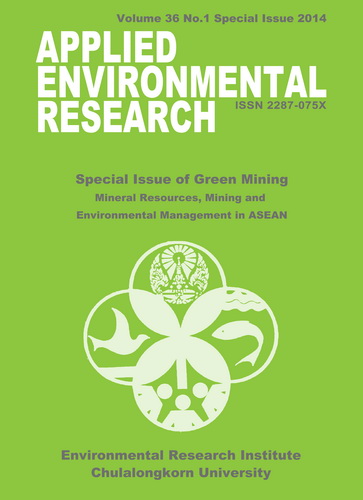Sustainable Mining in Myanmar
Main Article Content
Abstract
Myanmar is endowed with abundant natural and mineral resources. However, environmental degradation and social impacts have increased in recent years due to foreign investment in the mining sector and the application of modern technology in mining and processing methods to increase productivity. The growing trend towards new mining methods, particularly the shift from underground to open-cut method to mine and process low-grade ores contribute to generation of large volumes of waste rock and tailings, presenting a major disposal challenge. Wastes containing sulfides will further degrade the environment. Absence of an efficient legal framework for Artisanal and Small Scale Mining (ASM) for gold and gemstones, and the application of mechanized mining both contribute to adverse environmental and social impacts of mining operations. Myanmar’s newly-promulgated environmental law (2012) provides no details about environmental and social impact assessment and participation of communities and their role in conservation of the environment. Efficient guidelines are needed and continuous monitoring and Life Cycle Assessment (LCA) are essential for the greening of Myanmar’s mining sector.
Article Details

This work is licensed under a Creative Commons Attribution-NonCommercial 4.0 International License.
Published articles are under the copyright of the Applied Environmental Research effective when the article is accepted for publication thus granting Applied Environmental Research all rights for the work so that both parties may be protected from the consequences of unauthorized use. Partially or totally publication of an article elsewhere is possible only after the consent from the editors.
